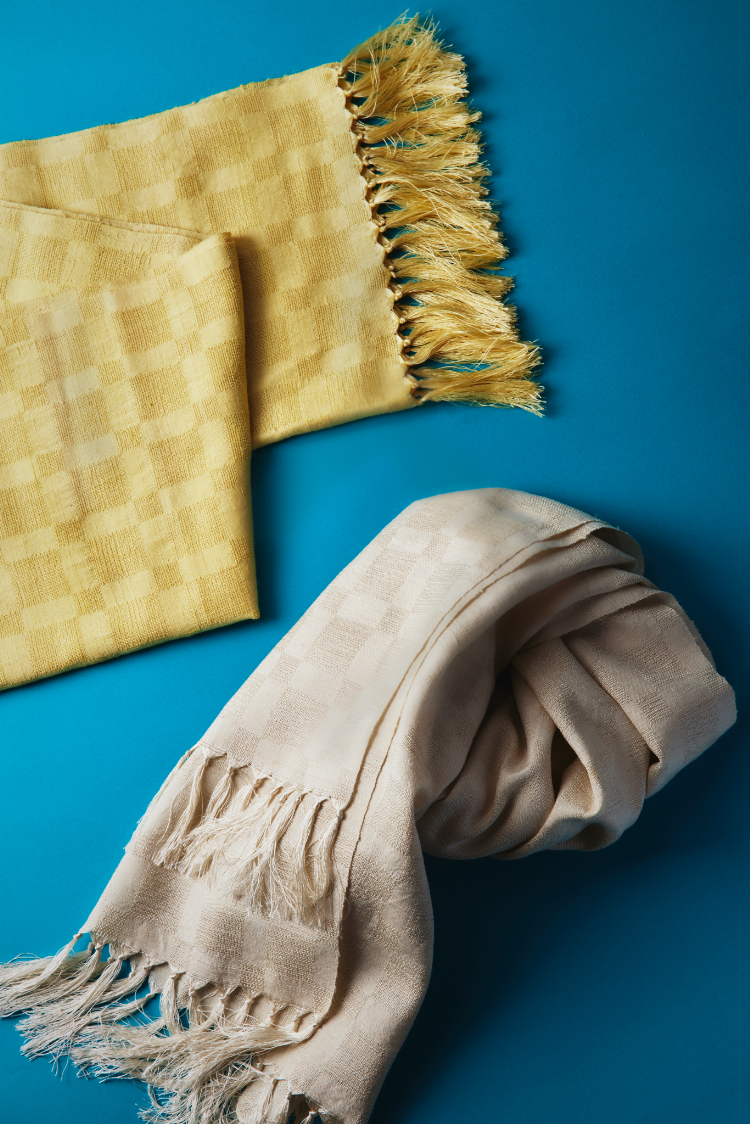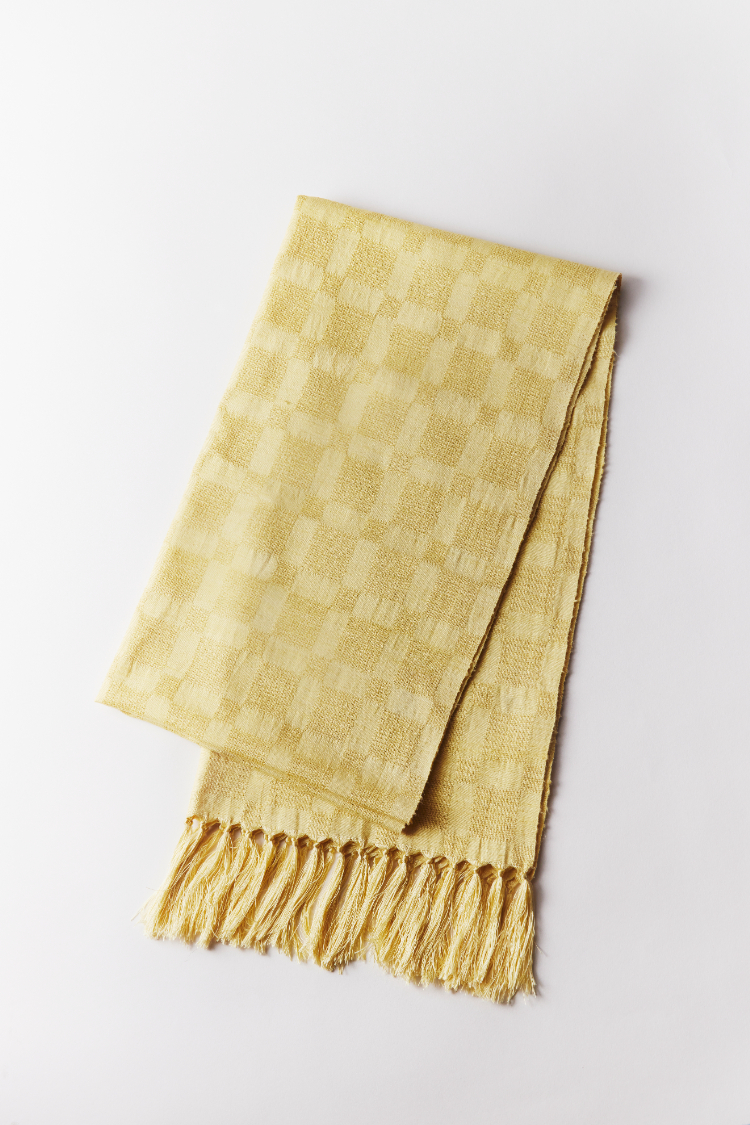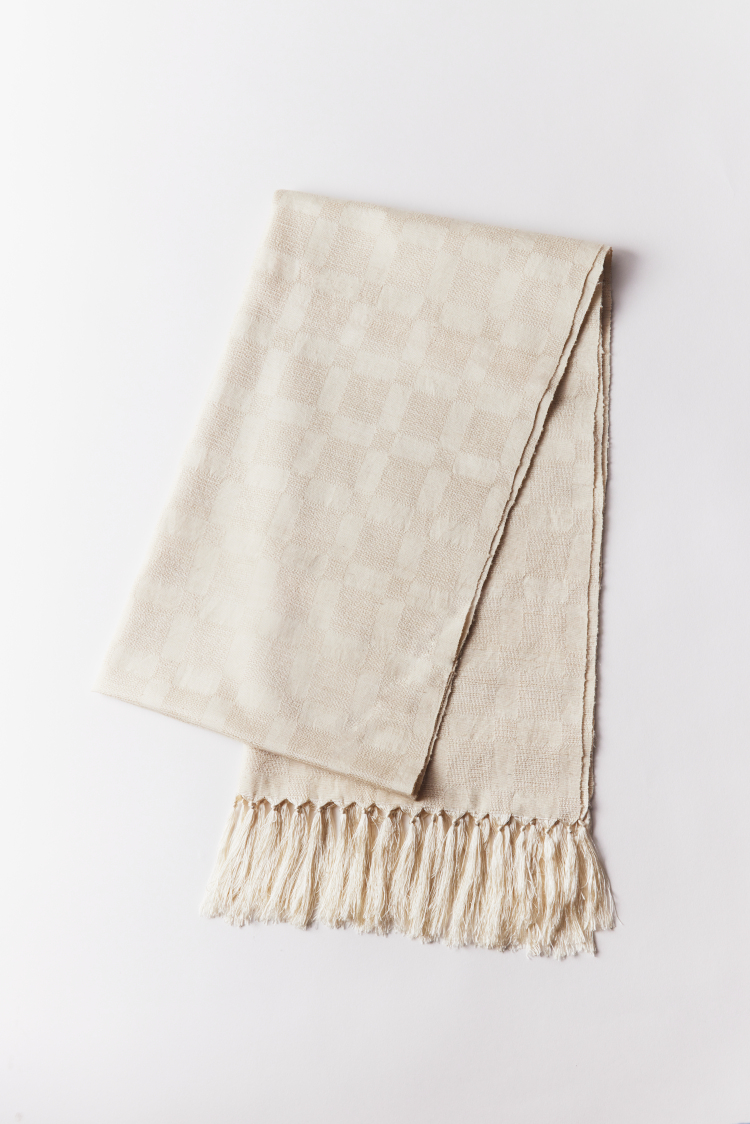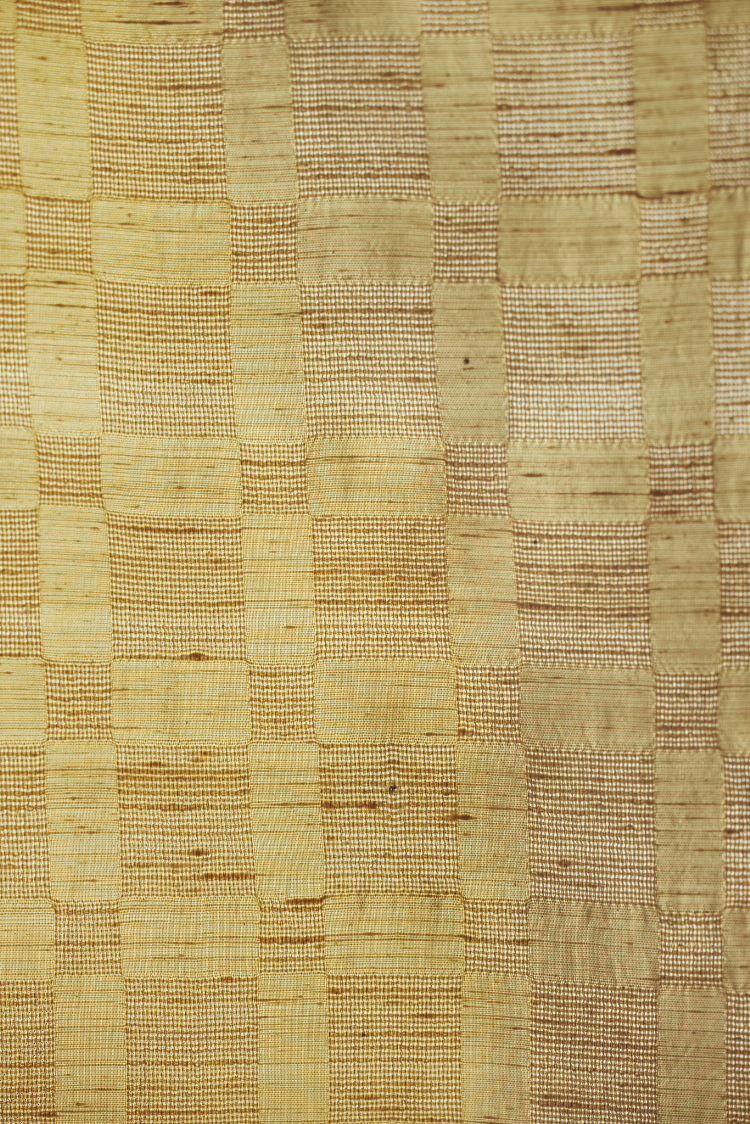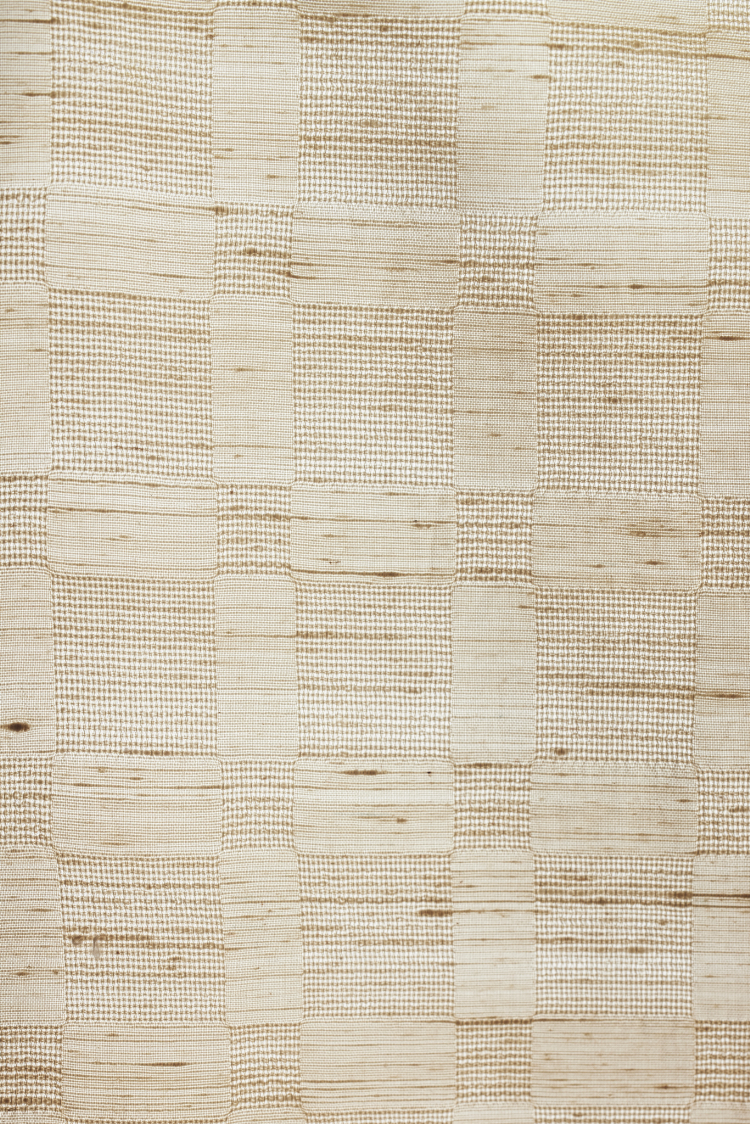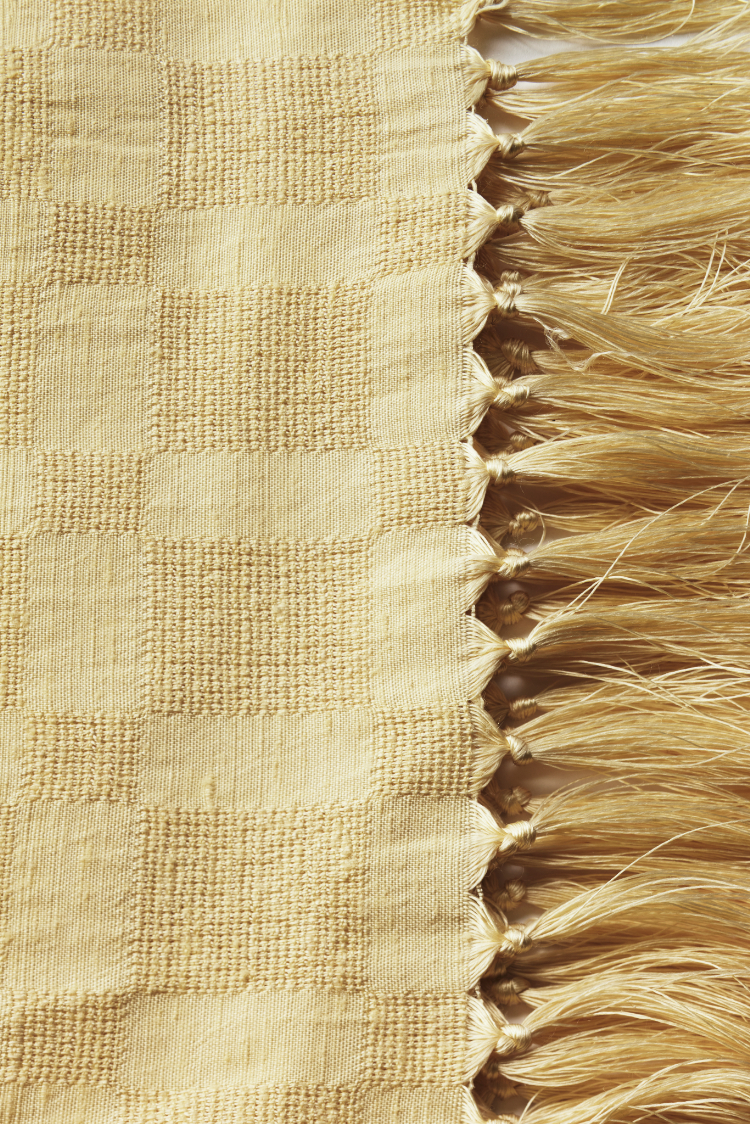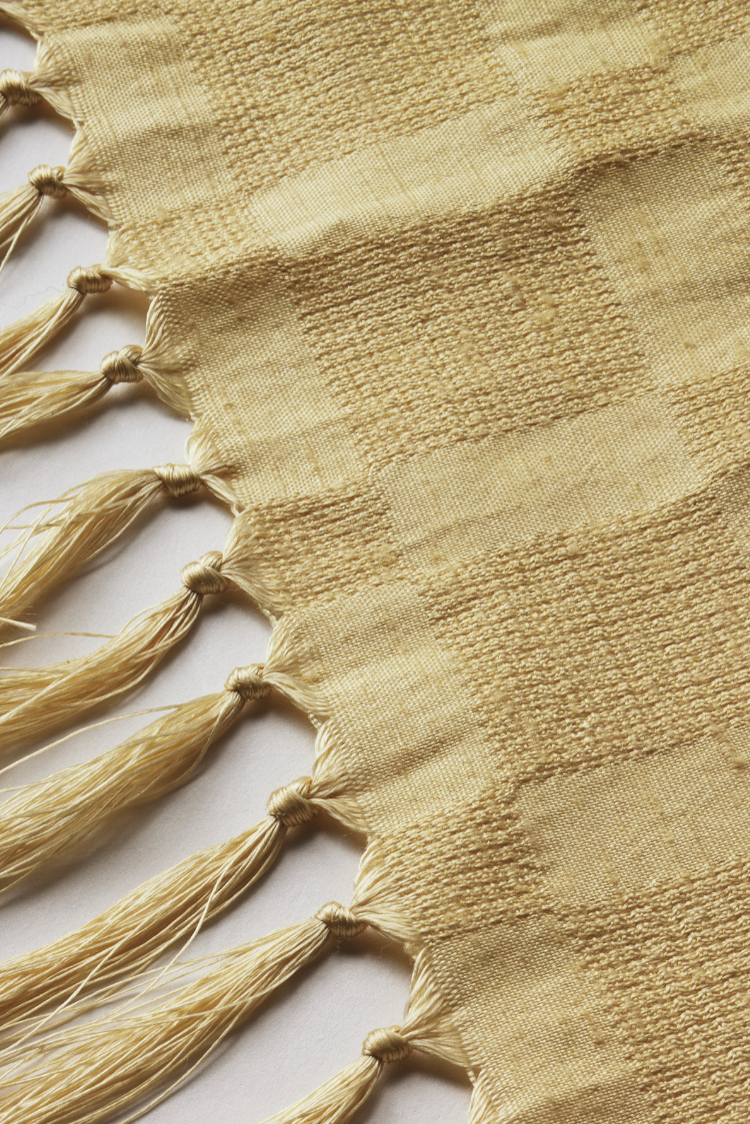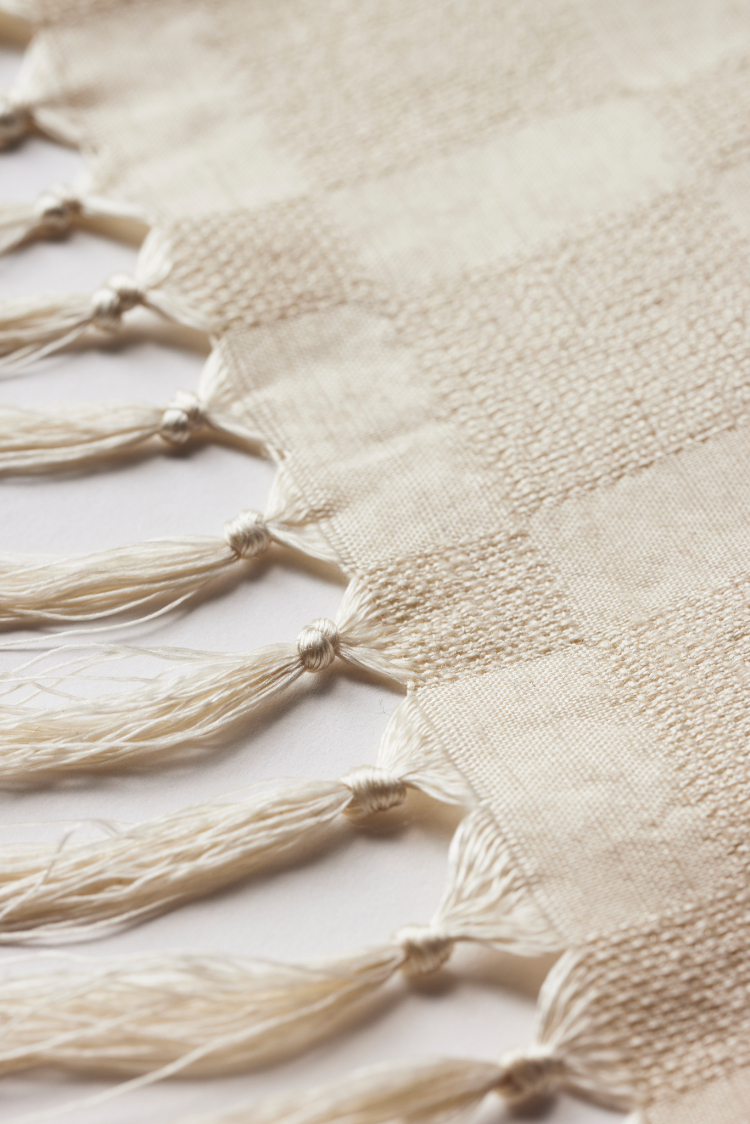Mulberry Stole
07 Tama Ori(Fabrics)Known as Soto, or mulberry capital, in the Edo period,
Hachioji thrived as a silk industry base.
Thanks to the blessing of bountiful mulberry bushes
(silkworms dine on mulberry leaves),
we came up with the mulberry stole.
A tea merchant asked us if we were interested in dyeing cloth
using Hachioji mulberry tea as the dye.
Well, if we are going to go that far,
why not make Hachioji mulberry the base for
every element of the textile, I thought.
So, we took the raw silk from cocoons of Hachioji-bred silkworms,
turned that into warp thread.
Then using a floss silk pongee thread as the weft thread,
To create a partially transparent check pattern
in the gisha-ori style of saw weave,
we were able to come up
with a light but warm stole as the end product.
Using abundant spring water,
we produce a two-tone stole of
yellow (from harmless-to-health aluminum mordanting)
and gray (that uses no mordanting material).
In the development of this stole,
Sawai’s solicitous sentiment for the mulberry shines out!
Used mulberry tealeaves are made into glazes for firing pottery.
The wood of withered mulberry bushes is made into chopsticks and chopstick stands.
Pupa can be turned into food.
And, doubtless, mulberry stems, which were once woven,
can be used to make textile fibers.
And, if we take the theme of the Hachioji mulberry that far,
we can use all the components of the mulberry bush
so as not to leave a trace of waste.
The silk industry that once sustained the mulberry capital
is now in decline due to soaring domestic labor costs
and the fading kimono industry,
to the point that if you want tama-ori textiles,
they have to be made from silk imported
from China or some other country.
Yet, it should not be that we just take it
for granted to consume cheap overseas products.
Instead, I would like people to think about choosing products
close to hand in their own residential neighborhoods
and to think how they can make the most of such products,
paying for the consideration of their value in one cycle,
and then taking good care of what has been purchased.
Of late, there is a trend toward recycling of materials,
such as cashmere and other wools,
but the fiber lengths vary with recycling,
making them less manageable, they also have to be redyed,
which, conversely, leads to the potential of environmental pollution.
If that is the case,
is there any point in taking all of that effort?
Rather, we should think
about how we can reasonably use things up?
And how we can set things up in a circulation style?
So that we can do things like returning silk to the soil naturally.
Thinking about things
like that is going to be a greater need from here on, I think.
And this thought is one of the starting points
of this meaningful project.
And it does not have to be just about uniting Hachioji,
as the whole of Japan should think
about how we can all lovingly use Japanese-made products.
With the concept of that big cycle in mind,
Shin Sawai is looking off into the distance
at a new kind of circulation style
that gives oxygen to opportunities for the mulberry stole.
- Mulberry Stole
- Material: Silk
Size: W475mm × L1,980mm
Types: Grey, Yellow
*The information on this site is as of May 2024.
*Sizes, colours and shapes of the actual products may differ slightly as they are
handmade.
*Product specifications and suggested retail prices may change without prior notice.

